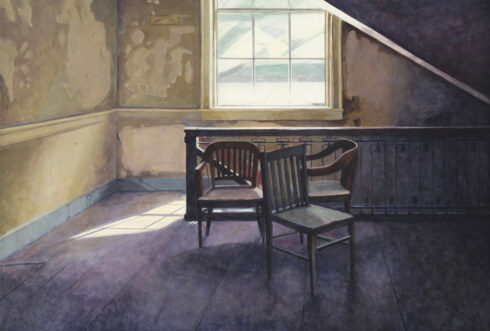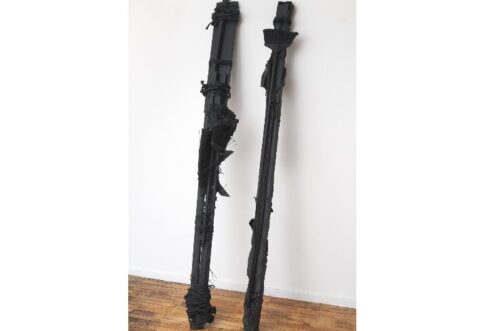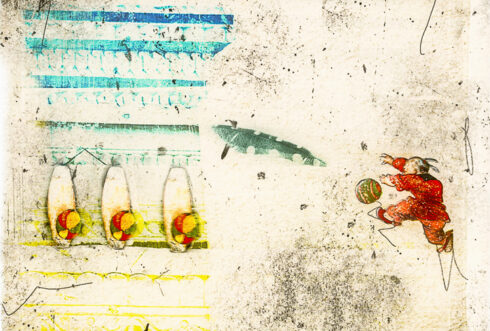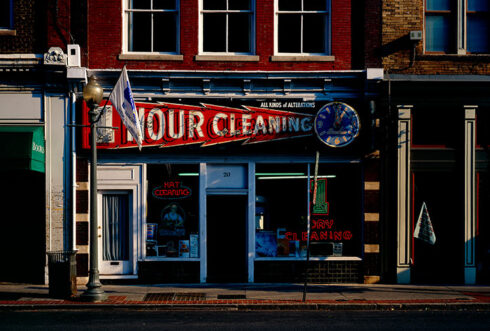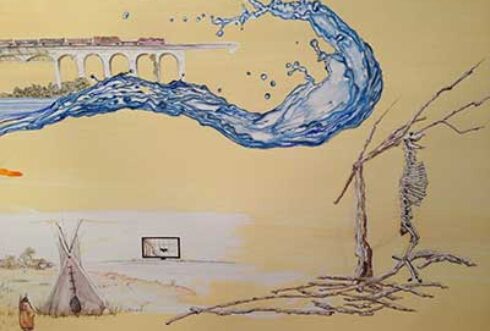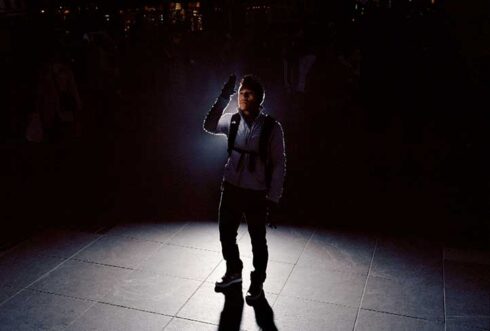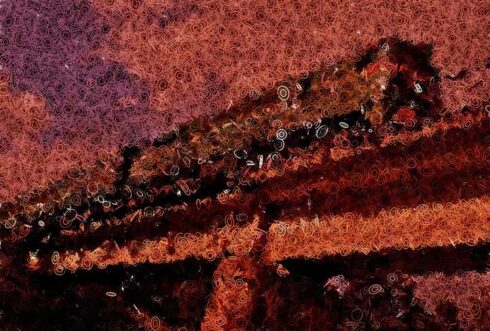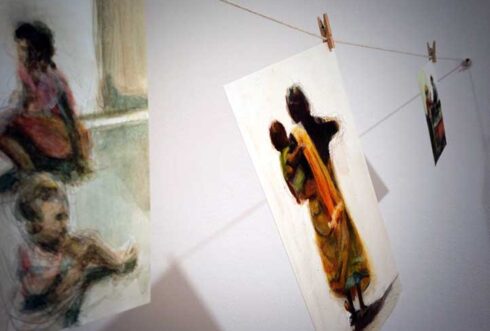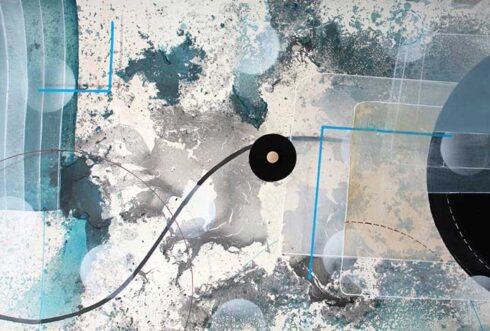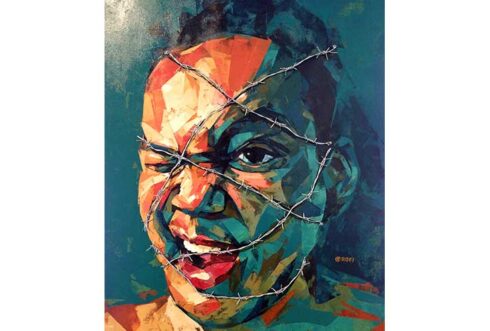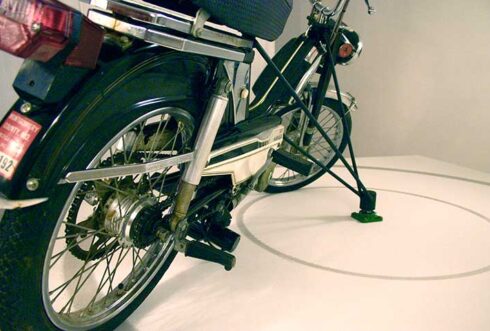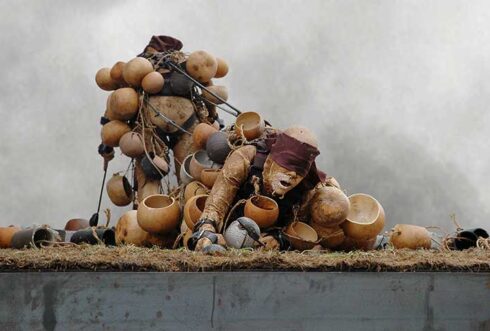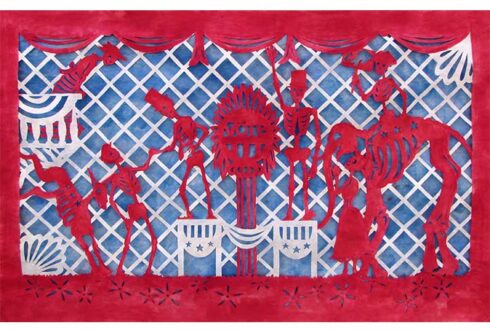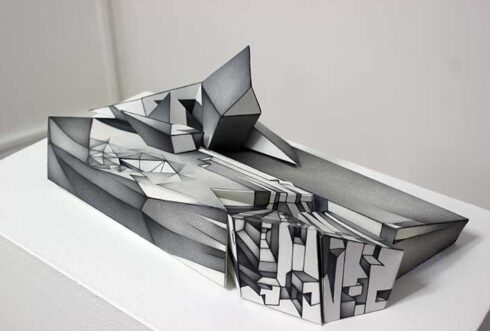Megan Crist, Jennifer DeAngelo, Piper Grosswendt, Jessica Hopkins, Zsófia Horváth, Jared Packard-Winkler, Jennifer Small, Mia Weiner
August 2013
2013 Young Contemporaries
Young Contemporaries presents disparate veils of perception from a generation reacting to the corporeal need for human connection in our fast-paced and detached digital domain. Whether simply looking through the shroud of a curtained window or looking from within numerous masks of personal identity, these nine artists offer layered filters of poetic sensibilities that address process, materiality, intimacy, identity, the passing of time, decay and death.
In Zsófia Horváth’s diptych Inside Out one can hear the poet Wendell Berry whispering both “Come to the window, look out, and see— and “Leave your windows and go out, people of the world—Say no to the Lords of War—” In this age of jihad, it is the inner work that is important. The seed of creativity is inside and the fruit is ripe.
Jennifer De Angelo’s Conception lushly illustrates the words of Rumi — “what happens to seeds inside their prisons will happen to us in our homes.” Because language cannot say it, we are offered a reason to paint.
Jane Remick presents a statement about the constructs of gender and race by examining where the photographer stands in a performance of photographing, projecting, re-photographing and projecting again. With over 1,000 known hate groups operating today in the United States, (a 67% increase from a decade ago according to the Southern Poverty Law Center) these images beg the viewer to question what is necessary to make a post-gender, post-racial society.
Mia Weiner creates delicate portraits by playing with the boundaries of technique and material. This is creation by a process of destruction. Using the devoré process (which means “devoured” in French), a chemical gel dissolves the cellulose fibers of the fabric. The artist feels that the effort to discern the white-on-white image is akin to the work required to recall certain memories.
Non-Hodgkin’s Lymphoma has motivated Jessica Hopkins to formulate an aesthetic language to express her experience with the disease. This is a language that employs color as sanctuary; a mask that could represent a supernatural being, a device for protection. Stripes, drips, and abstracted forms offer a distortion of reality that place the self-portrait in the realm of the universal.
Jennifer Small is concerned with the passing of time. She starts off recording a journey through her day with a camera, narrowing panoramas into single frames that are later manipulated into compositions documenting blocks of time. Her abstractions offer shades that at once feel familiar yet freshly foreign. Once again the poet whispers “Come to the window, look out, and see —the valley turning green in remembrance—the leaves that are the work of all of time —”
With muscularity, Jared Packard-Winkler proves the relevant power of painting to skewer the proverbial sacred cow, appropriating magic all the way back to Willendorf.
Color applied like Matisse cut outs dance across Piper Grosswendt’s altered thrift store linens and echo the marks of Jennifer Small across the room. The linens bring the viewer into a vast, yet intimate space where dreams become maps and diagrams that chart the territory of pillow talk.
The jewel-like photographs of decay by Megan Crist bring to mind heat index maps depicting regions of global warming and melting ice caps, leaving us with the poet saying “go out, people—Say no to the Lords of War—Say no by saying yes—to the air, to the earth, to the trees, yes to the grasses, to the rivers, to the birds and the animals and every living thing.”


